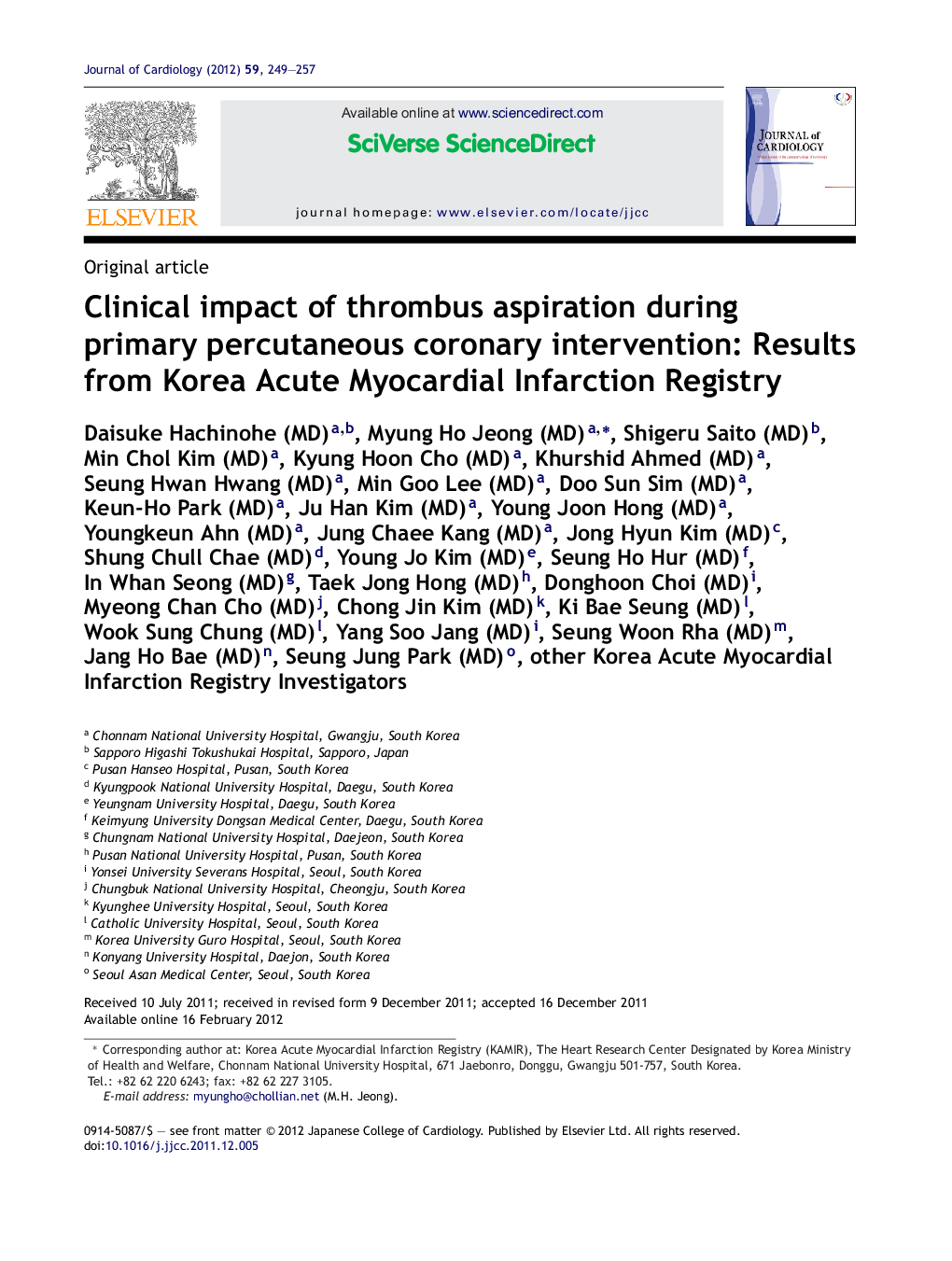| Article ID | Journal | Published Year | Pages | File Type |
|---|---|---|---|---|
| 2963511 | Journal of Cardiology | 2012 | 9 Pages |
SummaryBackgroundThe role of thrombus aspiration (TA) as an adjunct to primary percutaneous coronary intervention (PPCI) remains a matter of controversy.Methods and resultsA total of 2105 patients enrolled in the nationwide prospective Korea Acute Myocardial Infarction Registry, a cohort of 745 (35.4%) patients who underwent TA during PPCI was compared with 1360 (64.6%) patients who underwent conventional PCI without TA. Clinical outcomes at 12-months of overall enrolled patients and subgroups according to key variables were assessed using Cox regression models adjusted by propensity score. Although there was no significant difference among overall patients, in subgroup analyses, administration of glycoprotein (GP) IIb/IIIa inhibitor during PPCI [adjusted hazard ratio (HR) 0.329, 95% confidence interval (CI) 0.126–0.860, p = 0.023] and left anterior descending (LAD) as a culprit lesion (adjusted HR 0.516, 95% CI 0.275–0.971, p = 0.040) were the settings, in which TA was associated with a lower major adverse cardiac events (MACE) rate compared with non-TA.ConclusionsAlthough TA does not improve clinical outcomes in overall patients who underwent PPCI, TA for LAD occlusion improves 12-month MACE. Furthermore, use of GP IIb/IIIa inhibitor with TA has a synergistic effect on clinical outcomes.
